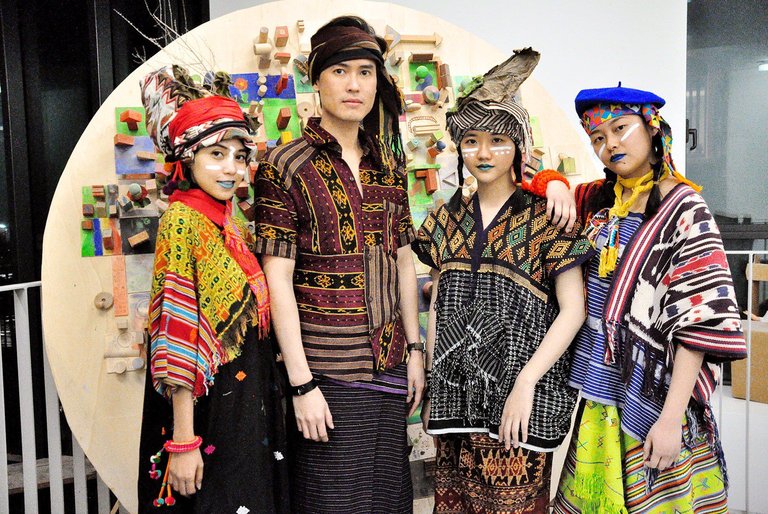Traveling is more than just a hobby for Dian Erra Kumalasari, who is now globetrotting to introduce Indonesia’s woven fabric to the world while supporting marginal communities who earn a living from traditional weaving.
A newcomer to the fashion business, she proudly introduces her ready-to-wear work, under the brand Oerip Batik, to various countries like the United States, Belgium, Holland, the Czech Republic and recently Italy.
While many other designers offer glamorous couture lines, Dian mainly showcases her works in the spirit of backpackers. Supported by a small team in her workshop in Bekasi, West Java, the designer, who started her venture in fashion in 2008 before targeting the international market in 2015, prefers to collaborate with her established European distributors and Indonesians abroad to introduce her designs.
At her Milan show late in February, Dian featured 16 designs focusing on East Nusa Tenggara’s Sumba and Lembata traditional woven fabric in her effort to promote the festival of three mountains in Lembata, Flores, slated for November.
The show also served as her private mission of humanity to help residents of Wakaibubak traditional village, a woven fabric center in West Sumba, to get back on their feet after their village was razed by fire last October.
“I hope my fashion events in Europe will popularize Sumba’s traditional woven fabric and increase the appreciation of various fabrics of ancestral legacy in the archipelago. I’ve committed to set aside my sale proceeds to be donated to the local community,” she said in Milan.
Her designs are outlandishly colorful and asymmetrical, apparently running counter to all standards of the fashion world as well as traditional materials application. Through her creations, she has won the Indonesian Womenpreneur Award for Best Costume Design: Hip Hop in Los Angeles, the US, in 2015.
The 2005 chemical engineering graduate of Diponegoro University in Semarang, Central Java, enjoys good sales in the Indonesian market. She said her daily sales could reach at least 50 items of clothing ranging in price from Rp 300,000 (US$21) to Rp 3 million.
Dian’s designs always present a combination of three types of Indonesian traditional fabrics aimed to show people that Indonesia has many types of fabrics and is characterized by Bhineka Tunggal Ika (Unity in Diversity).
In Milan, her show was opened with an Indonesian traditional dance with a modern twist performed by two performers from Madaloka Dance Studio, depicting two girls weaving and processing fabric.
Among her mesmerized audience was Daniela, 60, who came all the way from Ravenna, located 296 kilometers from Milan.
“I’ve come here from Ravenna because I love Indonesia and its culture. It’s indeed interesting to watch the clothing and cultural background of Indonesia presented here, and I appreciate the designer, who has succeeded in producing such gorgeous work from the fabrics,” she said.
She understands that the biggest challenge in making dresses by using traditional woven fabric is that every piece contains a tale and philosophy filled in personally by its weaver.
“I respect the craftwork very much so that in creating clothes I have to compromise with the valued stories of the craftspeople,” Daniela said.
Dian’s strategy to retain the traditional fabrics’ pattern is by creating universal designs in a one-size-fits-all shape. This also facilitates her business deals because her international buyers mostly shop online.
“As all items are one-size-fits-all, I can reach all consumers, and buyers have greater freedom to choose,” she said.
Since every fabric contains a meaningful pattern, Dian cuts it herself, saying her seamstresses did not have the confidence to do it.
“I do the material cutting myself. Before my next European tour, I’ve already cut the fabric and equipped my dressmakers with drawings and instructions so that my production won’t be halted while I’m away,” she said.

During her show in Milan, Dian collaborated with Heru Mataya, the founder of the Indonesia Umbrella Festival, with models coming from the Indonesian community in Milan and greater areas. They were also carrying Indonesian traditional umbrellas crafted from tie-dyed batik, checkered fabric, classic batik, striped woven fabrics and others.!
Hi! I am a robot. I just upvoted you! I found similar content that readers might be interested in:
http://www.thejakartapost.com/life/2018/03/09/promoting-traditional-fabric-in-backpacker-fashion.html